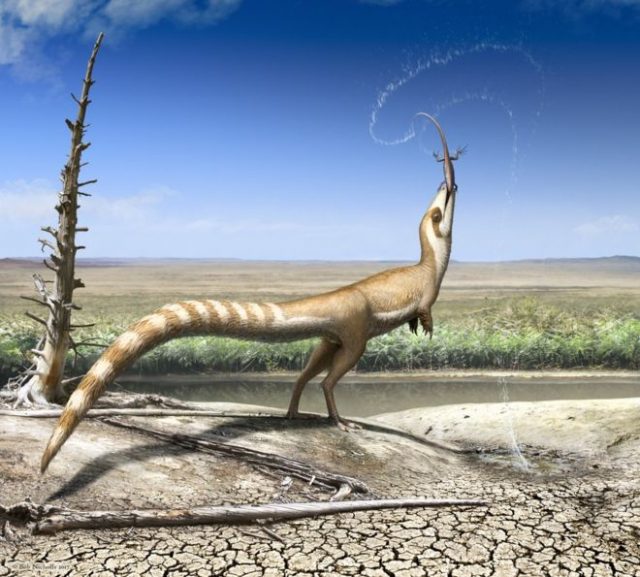MI weekly selection #256

Ancient feathered dinosaur had raccoon-like facial markings
The feathered dinosaur Sinosauropteryx, which lived in northeast China between 133 million and 120 million years ago, had bandit-like markings on its face like a raccoon, as well as a banded tail and counter-shading. Researchers say the unique colour patterns may have helped the small dinosaur blend into its wide-open environment.
Raccoons find innovative ways to retrieve treats in Aesop’s Fable test
Raccoons used innovative methods to solve the age-old Aesop’s Fable cognition test to retrieve a treat from a cylinder using water displacement. Not only did some of the raccoons learn to drop objects into the container to raise the liquid high enough to reach the treat, but others surprised researchers by getting to the treat in different ways, including rocking the cylinder until it tipped over or making waves with floating balls.
Toxic cloud over Titan surprises scientists
A toxic cloud of hydrogen cyanide and benzene above Saturn’s moon Titan has surprised scientists by being a single cloud instead of individual layers, as seen in observations by the Cassini space probe. “This cloud represents a new chemical formula of ice in Titan’s atmosphere,” said Cassini scientist Carrie Anderson.
Bouts of rage seen in patients after brain-stimulation treatment for depression
A treatment used to treat a number of conditions, including obsessive-compulsive disorder and addiction, can cause fits of anger in some patients being treated for depression. Transcranial direct current stimulation has shown promise in treating depression when applied to the left dorsolateral prefrontal cortex, but in two recent cases, the treatment caused patients to experience angry outbursts.
Better understanding of human consciousness could affect AI development
Researchers have identified three levels of human consciousness, which may help scientists one day create conscious artificial intelligence. “Once we can spell out in computational terms what the differences may be in humans between conscious and unconsciousness, coding that into computers may not be that hard,” said Hakwan Lau, a study co-author.